BeoVision 800
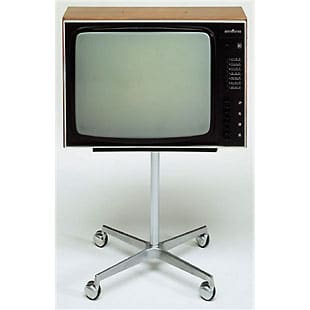

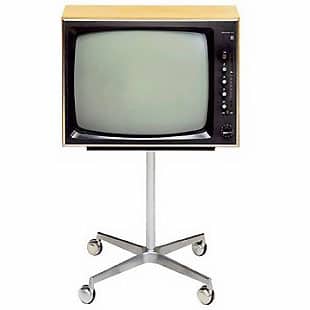
Beovision 700 won the iF Design Award in 1966
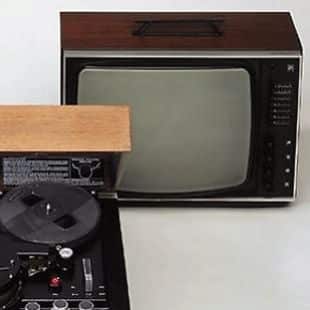
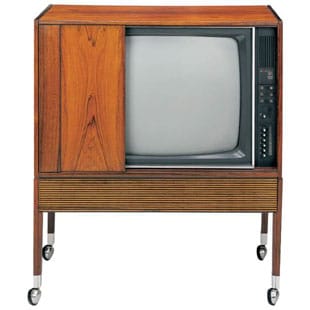
” Beovision 3000 Colour SJ is a colour television receiver built like a deluxe PAL receiver with a delay module for the PAL system. The receiver is compatible, which means it is capable of receiving either black-and-white or colour programmes, and the transition is automatic so that you avoid manual operation of buttons or similar controls “
In the summer of 1963, Bang & Olufsen began the development of the first colour television, with engineer Bent Moller Pedersen and an apprentice. Testing the new receivers was still a problem, because there were not many places where colour test cards could be received. It came as a relief to the technicians when, in 1966, Hamburg began to broadcast test cards.
A Bang & Olufsen colour television laboratory with three technicians was set up for a week at a pub 25 km north of Hamburg! In 1967, Bang & Olufsen began producing colour televisions – not without a certain cautious scepticism. Director Jens Christian Sonderup wrote to retailers in the summer of 1967: “At the moment, no one can say with any degree of certainty how sales of colour televisions will develop. Let us be clear about one thing, though: colour television will not be the bread and butter of the sector during the coming season… We must all hope and believe that the radio sector will prove to be a match for colour TV. in B&O circles, let us as usual err on the side of healthy development.” Weighing in at 52 kg, the Beovision 3000 Colour S.1 was an investment for the company in a market that was still feeling its way between different international standards.
The introduction of colour television brought with it some new concepts that were unknown in the days of black-and white reception: colour saturation and colour tone. The picture tube was now 63cm, but it could not be manufactured with sufficient perfection and accuracy for the three electron guns in the picture tube to line up properly on the interior of the picture tube. It was therefore necessary to make some manual adjustments (convergence adjustments) in production as well as in subsequent servicing. The set had to be adjusted at regular intervals. That had also been taken into consideration in this unit. Chief Engineer Knud Hoist and Engineer Bent Moller Pedersen wrote the following instructions with the service technicians (rather playfully) in mind: “Here is B&O’s unconventional solution on the deployment of the convergence buttons. Remove the small panel at the front of the set by lifting it with a coin. The flap can then be pushed far back enough to allow easy access to the convergence buttons while, at the same time, their effect can be seen by looking at the screen. One reason why we have done this is in order not to impose a requirement for future colour TV technicians to be born with extra-long arms!
Despite the director’s cautious scepticism, Chief Engineer Knud Hoist had no doubt that colour television was the way ahead. Speaking in a radio lecture, he said: “If we don’t open the front door to colour television by introducing a Danish colour TV, it will come in by the back door as foreign broadcasts over our borders. Continuing to exclude colour television for much longer from parts of the country that are not covered by Germany will create such a great demand backlog that both the manufacturing sector and the retail sector will both find it difficult to cope when it is finally released. It would be much more desirable to accept what is otherwise an inevitable, slow penetration of colour television into Denmark – and to act accordingly.”
(Taken from Beolink Magazine: ‘The First 50 Years of Television’ © Bang & Olufsen a/s 2002)
” Its 625-line only circuitry initially made it of limited use, as BBC1 and ITV were not widely receivable on this standard, leaving BBC2 as the only viewable programme. Beovision 3000 made up for this though by offering the best quality colour picture yet seen, so good in fact that in certain areas it remained unsurpassed for years after it was withdrawn. When B&O released its first solid state colour sets in 1974, these had to be modified in the field, as their contrast levels seemed ‘washed out’ compared to the then 6 year old 3000s!
Quality was achieved at the cost of considerable complexity. It is well known that cost was not a factor in the design of the 3000, and so any extra parts or stages that could possibly up the performance were added without question. The result was a set with 18 valves, 53 transistors and 48 diodes arranged on two massive chassis. Technical highlights included decoder circuitry working at high voltage to improve colour linearity, DC controlled static convergence, apparently less susceptible to mains voltage variations, separate line scan output stage and EHT generator employing two transformers and two sets of large valves, which improved geometry and dimensional stability, an electronic EHT stabiliser which helped to ensure uniform focusing, and of course, a comprehensive audio amplifier employing three transistors, one valve and heavy negative feedback, all driving a high quality loudspeaker.
These sets demonstrated to the new British market that B&O’s televisions were every bit as good as their audio, and started a long line of development which can be directly traced to the current models. “
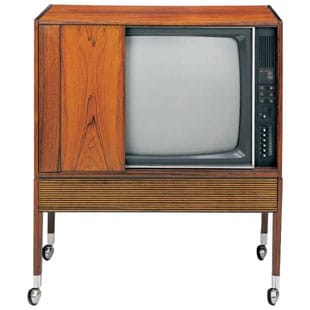
” Beovision 3000 Colour SJ is a colour television receiver built like a deluxe PAL receiver with a delay module for the PAL system. The receiver is compatible, which means it is capable of receiving either black-and-white or colour programmes, and the transition is automatic so that you avoid manual operation of buttons or similar controls “
In the summer of 1963, Bang & Olufsen began the development of the first colour television, with engineer Bent Moller Pedersen and an apprentice. Testing the new receivers was still a problem, because there were not many places where colour test cards could be received. It came as a relief to the technicians when, in 1966, Hamburg began to broadcast test cards.
A Bang & Olufsen colour television laboratory with three technicians was set up for a week at a pub 25 km north of Hamburg! In 1967, Bang & Olufsen began producing colour televisions – not without a certain cautious scepticism. Director Jens Christian Sonderup wrote to retailers in the summer of 1967: “At the moment, no one can say with any degree of certainty how sales of colour televisions will develop. Let us be clear about one thing, though: colour television will not be the bread and butter of the sector during the coming season… We must all hope and believe that the radio sector will prove to be a match for colour TV. in B&O circles, let us as usual err on the side of healthy development.” Weighing in at 52 kg, the Beovision 3000 Colour S.1 was an investment for the company in a market that was still feeling its way between different international standards.
The introduction of colour television brought with it some new concepts that were unknown in the days of black-and white reception: colour saturation and colour tone. The picture tube was now 63cm, but it could not be manufactured with sufficient perfection and accuracy for the three electron guns in the picture tube to line up properly on the interior of the picture tube. It was therefore necessary to make some manual adjustments (convergence adjustments) in production as well as in subsequent servicing. The set had to be adjusted at regular intervals. That had also been taken into consideration in this unit. Chief Engineer Knud Hoist and Engineer Bent Moller Pedersen wrote the following instructions with the service technicians (rather playfully) in mind: “Here is B&O’s unconventional solution on the deployment of the convergence buttons. Remove the small panel at the front of the set by lifting it with a coin. The flap can then be pushed far back enough to allow easy access to the convergence buttons while, at the same time, their effect can be seen by looking at the screen. One reason why we have done this is in order not to impose a requirement for future colour TV technicians to be born with extra-long arms!
Despite the director’s cautious scepticism, Chief Engineer Knud Hoist had no doubt that colour television was the way ahead. Speaking in a radio lecture, he said: “If we don’t open the front door to colour television by introducing a Danish colour TV, it will come in by the back door as foreign broadcasts over our borders. Continuing to exclude colour television for much longer from parts of the country that are not covered by Germany will create such a great demand backlog that both the manufacturing sector and the retail sector will both find it difficult to cope when it is finally released. It would be much more desirable to accept what is otherwise an inevitable, slow penetration of colour television into Denmark – and to act accordingly.”
(Taken from Beolink Magazine: ‘The First 50 Years of Television’ © Bang & Olufsen a/s 2002)
” Its 625-line only circuitry initially made it of limited use, as BBC1 and ITV were not widely receivable on this standard, leaving BBC2 as the only viewable programme. Beovision 3000 made up for this though by offering the best quality colour picture yet seen, so good in fact that in certain areas it remained unsurpassed for years after it was withdrawn. When B&O released its first solid state colour sets in 1974, these had to be modified in the field, as their contrast levels seemed ‘washed out’ compared to the then 6 year old 3000s!
Quality was achieved at the cost of considerable complexity. It is well known that cost was not a factor in the design of the 3000, and so any extra parts or stages that could possibly up the performance were added without question. The result was a set with 18 valves, 53 transistors and 48 diodes arranged on two massive chassis. Technical highlights included decoder circuitry working at high voltage to improve colour linearity, DC controlled static convergence, apparently less susceptible to mains voltage variations, separate line scan output stage and EHT generator employing two transformers and two sets of large valves, which improved geometry and dimensional stability, an electronic EHT stabiliser which helped to ensure uniform focusing, and of course, a comprehensive audio amplifier employing three transistors, one valve and heavy negative feedback, all driving a high quality loudspeaker.
These sets demonstrated to the new British market that B&O’s televisions were every bit as good as their audio, and started a long line of development which can be directly traced to the current models. “
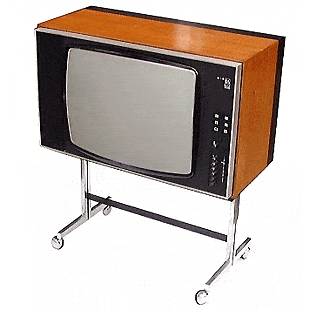
This “open screen” table model was one of B&O’s early attempts to produce a more compact colour receiver that was suitable for smaller rooms. Using the chassis from the Beovision 3200 and a 22” “push through” tube, the set was neat and elegant but still not exactly small, the two massive chassis were shared with the other models in the range and these, rather than the screen size, dictated the dimensions of the cabinet. An attempt to disguise the bulk was made by adding a black strip all around the back of the cabinet, breaking up the otherwise vast expanses of wood, though this can be said to be only partially successful.
The front of the Beovision 2600 was finished in matt black and trimmed around the outside with aluminium. The loudspeakers (two elliptical units made by Celestion in the UK) took up a new position to the left of the screen, displacing the convergence controls to a hatch on the underside. Access to these was easy if the set was mounted on the optional stand but impossible if it was placed on a (sturdy) table. This was not ideal, as a set of this design should not be moved once convergence is completed.
The Beovision 2600 was not replaced directly when the 3400 range was introduced as all these models came with 26” tubes. However, the table version of the Beovision 3400 was considerably smaller than the 2600 anyway, so in practice a problem did not arise. 22” sets were re-introduced with the new 39XX series models, for example the Beovision 3500.
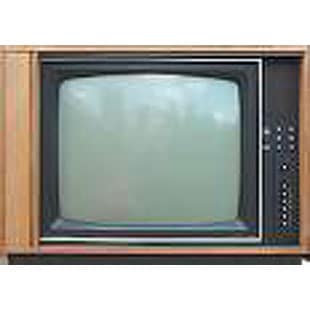
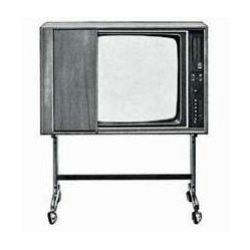
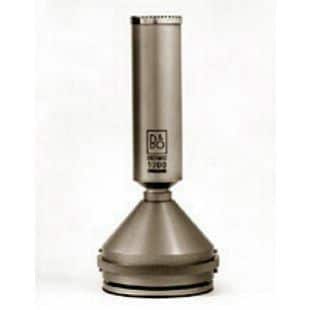
Designed by Jacob Jensen, Beomic 1000 won the iF Award in 1969 for “outstanding industrial design”.
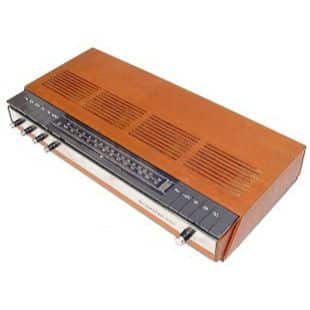
Beomaster 1000 – a compact all-transistor hi-fi 2 x 15 watt stereo amplifier equipped with a highly selective FL radio with extended FM band (to 108 MHz), 3-gang tuning capacitor and 4-stage intermediate-frequency amplifier, automatic control circuit which locks on FM stations and keeps them accurately tuned.
It is prepared for single-transmitter stereo broadcasts, having a B&O multiplex adaptor (stereo decoder); it is also equipped with a pilot lamp (“Beo-Beacon”) which lights up when the receiver is tuned to a station transmitting an FM stereo programme.
The stereo amplifier, which plays both stereo and mono gramophone records, delivers no less than 2 x 15 watts of power output; piano-key speaker change-over switches which control two sets of stereo speaker systems, separate extra-efficient bass and treble controls; balance control for correct stereo sound distribution; physiologically compensated volume control (provides full balance at all volume levels throughout the tonal range); separate scratch and rumble filters; piano-key switching between mono and stereo reproduction; piano-key selectors for switching between the following types of operation: FM Broadcasting, FM Automatic Frequency Control; Tape Recorder; Gramophone 1; Gramophone 2.
Dimensions: 87mm high, 505mm wide, 24mm deep.
Choice of teak or Brazilian rosewood finish. Awarded the 1966 iF Prize for Industrial Design”